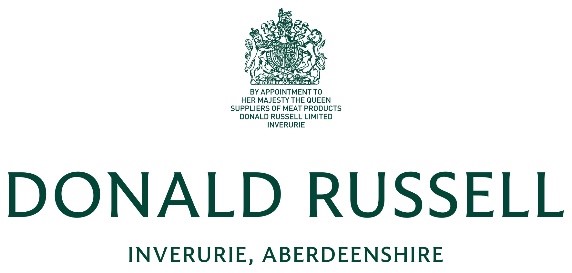Information
-
Document No.
-
Audit Title
-
Client / Site
-
Conducted on
-
Prepared by
-
Location
-
Personnel
Practices
Other - Auditor discretion section
-
Any other risks/hazards that could pose a major risk to the business
Purchase practices
-
High risk food items, eg ready to eat food, cooked meat, cheese purchased from unauthorised suppliers
Receipt of goods
-
Chilled food <8c. Frozen food <-15c. Food left unattended outside and or delivered prior to site opening
-
Temperature more than 8c on delivery for chilled, warmer than -15c for frozen - high risk foods
Storage practices
-
Major cross contamination risk, eg raw meat dripping onto cooked ready to eat food
-
Food is more than 8c and no action has been taken to remove the food or log the defect
-
Frozen food is warmer than -15c and no action has been taken to remove the food or log the defect
-
Several items of chilled or frozen food items not covered where contamination is likely. Or damaged packaging presenting foreign body contamination
-
Non food is stored close enough to pose a medium to high cross contamination risk
-
High risk fish found above 4c OR fish not stored on ice and temperature out of specification
General Practices
-
No working probe present on site, or not being used.
-
Food handler observed taking probe temperature reading without first sanitising the probe and without cleaning probe or staff not clear on correct procedure
Stock control
-
More than 1 item present after the manufacturers use-by-date
-
High risk foods not being labelled correctly
-
Evidence of deliberate relabeling
-
Any mould on pre-prepared manufactured or high risk foods including raw meat or more than 3 occurrance of mould on fruit and veg (if clearly segregated and labelled "not for use" do not score)
-
Any food being frozen in house
Food preparation practices
-
Food being handled without colour coded tongs where applicable
-
Cookbook not present on site, menu development sheets where required are not present
-
Any use of raw shell eggs in uncooked or lightly cooked products demonstrating a critical failure and there could be a significant health risk to staff and customers
-
High risk food being kept out of temperature control/at ambient, unnecessarily during preparation, resulting in the temperature of the product exceeding 8c
-
Salad not washed or sanitised
-
Boards/utensils used incorrectly with actual risk of cross contamination observed eg red knife used to cut cooked meat
-
Serious of actual cross contamination risk eg raw boards observed in use in same area as ready to eat items, not separated by time or disinfection
-
Incorrect colour coded chopping board used for incorrect task, full set of colour coded boards not available
-
Only 1 cling wrap dispenser on site or the site observed using a dispenser for RTE foods after using with raw foods
-
Food seen defrosting anywhere other than a fridge
-
Inappropriate use of food preparation items and sinks, presenting the potential for harm. Epuipment or hands cleaned in a designated food sink or food washed in an equipment sink or hand wash basin.
-
Wooden equipment in use, poor condition, risk of contamination OR unsealed wooden equipment in use
-
Foreign bodies present in food items
-
Disposable plastic aprons and gloves not in use for the preparation of raw foods (raw food includes meat, fruit and vegetables which have been in touch with the soil and are not supplied as ready-to-eat)
Cooking and reheating
-
Food being cooled for over 90 minutes, posing risk of bacterial multiplication or production of toxins. Or food not reaching 8c within the 90 minutes
-
Any food items being reheated more than once
-
Team members observed putting raw foods on the grill in different locations or any foods being placed on the grill where cross contamination could occur
-
Chef observed using the same tongs for raw and cooked food (food classified as raw until cooked on both sides)
-
When questioned staff were unable to explain the process or were inaccurate in their response in relation to cooking/reheated to reach core temperature. Question team when not present to observe their practices
-
Any high risk food items being reheated in equipment designed to hot hold food
-
Hot held food less than 65c and or hot held food not being discarded after 2 hours
Cooling
-
Food items uncovered and cooling, in a location with a risk of contamination eg flies present, wash up sinks
-
Food being cooled for over 90 minutes, posing risk of bacterial multiplication or production or toxins. Or food not reaching 8c within the 90 mins
Bar practices
-
Major risk observed in relation to beer line cleaning
-
Items stored inside the ice machine, likely to contaminate ice eg customer shopping, glass
Personal Hygiene practies
-
Fully obstructed WHB
-
Filthy uniform, serious cross contamination risk
-
Filthy team member facilities
-
Observation or eating in a food preparation area/internal smoking observed
-
Hand washing not being completed as appropriate. E.g. after break, removal of refuse etc. Chef observed handling raw food and then RTE/high risk food item causing direct contamination
-
Exclusion policy not being adhered to i.e. return to work forms not being completed
-
Evidence of team members not reporting infectious diseases to the management team
-
Incorrect procedure observed and outbreak either likely or occuring (noro virus)
-
Fully stocked WHB not present in food preparation area, or staff facilities. Dirty WHB, not working or impossible to wash hands safely
Allergen control
-
The 14 legally defined allergens are not closed and cross contamination is likely
-
Actual allergen cross contamination observed through preparation
-
Actual allergen cross contamination observed through inadequate washing of equipment or hands after handling allergenic foods
Structure
Waste management
-
Overflowing bins present in food preparation areas
-
Overflowing bins in bin yard, pests present
Pest management
-
Areas filthy, food debris evident, been there for a number of days
-
Windows and doors not adequately pest proofed and pest activity present
-
High risk pest activity NOT being managed
-
High risk pest activity sheet not in use
-
Sanitisation of equipment not adequate according level of pest infestation
-
Housekeeping recommendations not completed AND ACTIVITY ON SITE
-
Major proofing works required
-
Evidence of domestic pets in food room
Cleaning & redundant equipment
-
Canopies are filters not clean with debris and grime
-
A number of areas dirty. Food or hand contact areas which are also not being sanitised. Creating risk of contamination
-
No sanitiser on site
-
Sanitiser in use at wrong concentration creating risk of contamination
-
Significant amount of organic material found internally to dishwasher, rinse temp of 82c not achievable and no cleaning products attached to unit
-
Redundant equipment on site creating a harbourage issue for pest or making effective cleaning difficult
-
Colour coded cloths not used, or red cloths not disposed of immediately
-
A number of dirty cloths observed or cloths filthy, risk of contamination
-
2 stage clean not being carried out inbetween handling raw and RTE food, after prepping unsanitised fruit & veg etc. There is a risk to food through cross contamination
-
Walls/floors and junctions not clean and risk or formal action
-
Cleanliness of equipment and utensils poses a high contamination risk
Walls/Ceiling/Windows
-
Risk of walls flaking or contamination of food
-
Risk of ceiling flaking or contamination of food
-
Window in poor repair and food contamination is likely
-
Mould growth observed in a food room
Other structural risks
-
Damaged or uncleanable food preparation surfaces in use that pose a risk of contamination to the food items
-
Exposed bulb in a food storage location (no cover), if smashes could contaminate food
-
Where the means of ventilation/extraction is broken and the heat/humidity is above 35c resulting from this working compromises food safety or health and safety standards
-
If there is a blocked drain in a food room, and waste is overflowing onto the floor, or causing backflow into sinks
-
There is no water supply and the business is still trading
-
There is no or inadequate hot water supply to a food room, emergency hot water procedure not in use and risk of contamination, or emergency procedures have been in place for over 24 hours
-
The only toilet for staff is not working
-
Issues effecting doors ability to be closed or mouldy and cannot be effectively cleaned with risks of contamination (in relation to fridge door seals)
-
Damaged food contact equipment, that cannot be cleaned effectively with risks of contamination
-
Food preparation surfaces in use that poses a risk of contamination to food items through equipment not being maintained
-
Storage racking in use that poses a serious risk of contamination to the food items
-
Risk of contamination likely/imminent due to kitchen layout no adequately allowing separation of raw and RTE foods
Confidence in management
-
Significant number of daily, weekly checks not completed or completed incorrectly. Or evidence of falsification, demonstrating a critical failure of procedures
-
Fraudalent completion of cleaning schedules
-
Falsification of records observed by auditor, including records completed in advance
-
Issues noted on EHO report not addressed by the site
-
0-3 previous audit not signed off within 48hrs or signed off and not actioned
-
No safety manual on site and no evidence management have chased
-
Food handler demonstrating poor knowledge of food safety/contradictory to company policy or unable to reference relevant information
-
Management team were not able to demonstrate knowledge of key food safety risk or where to find the relevant information
-
Management team unable to find safety manual, HACCP or cooking matrixes
-
Managers and/or staff unaware of allergens or company procedure
-
Staff on duty in the kithen unable to confidently state 60 seconds contact time following 2 stage clean
-
Day dot guide not displayed understood or being followed
-
Cooking matrices not personalised to the equipment on site
-
Raw preparation area not clearly signed









